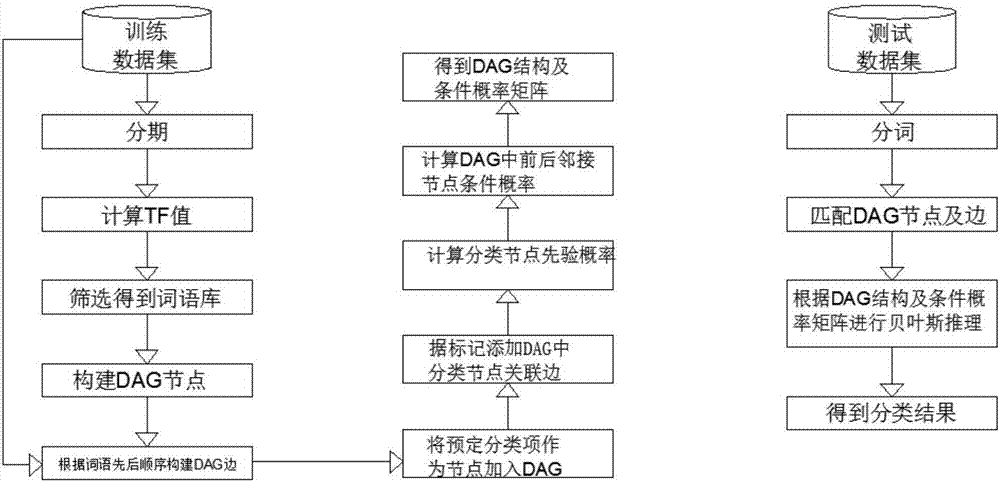Method for classifying problems on basis of PGM (probabilistic graph models)
A technology of problem classification and classification methods, applied in text database clustering/classification, special data processing applications, instruments, etc., can solve problems such as poor flexibility, reliance on expert knowledge, and heavy workload in establishing and maintaining rule bases. Reasonable, explanatory effect
- Summary
- Abstract
- Description
- Claims
- Application Information
AI Technical Summary
Problems solved by technology
Method used
Image
Examples
Embodiment Construction
[0019] The following will clearly and completely describe the technical solutions in the embodiments of the present invention with reference to the accompanying drawings in the embodiments of the present invention. Obviously, the described embodiments are only some, not all, embodiments of the present invention. Based on the embodiments of the present invention, all other embodiments obtained by persons of ordinary skill in the art without making creative efforts belong to the protection scope of the present invention.
[0020] see figure 1 and 2 , a PGM-based problem classification method, including modeling and reasoning; the modeling manually classifies the training data set, and brings the classified labeled data set into the probability graph model to construct a directed acyclic network (DAG) The network structure calculates the prior probability and conditional probability of each observation node to obtain the model conditional probability distribution (CPD). The reas...
PUM
 Login to View More
Login to View More Abstract
Description
Claims
Application Information
 Login to View More
Login to View More - R&D
- Intellectual Property
- Life Sciences
- Materials
- Tech Scout
- Unparalleled Data Quality
- Higher Quality Content
- 60% Fewer Hallucinations
Browse by: Latest US Patents, China's latest patents, Technical Efficacy Thesaurus, Application Domain, Technology Topic, Popular Technical Reports.
© 2025 PatSnap. All rights reserved.Legal|Privacy policy|Modern Slavery Act Transparency Statement|Sitemap|About US| Contact US: help@patsnap.com



